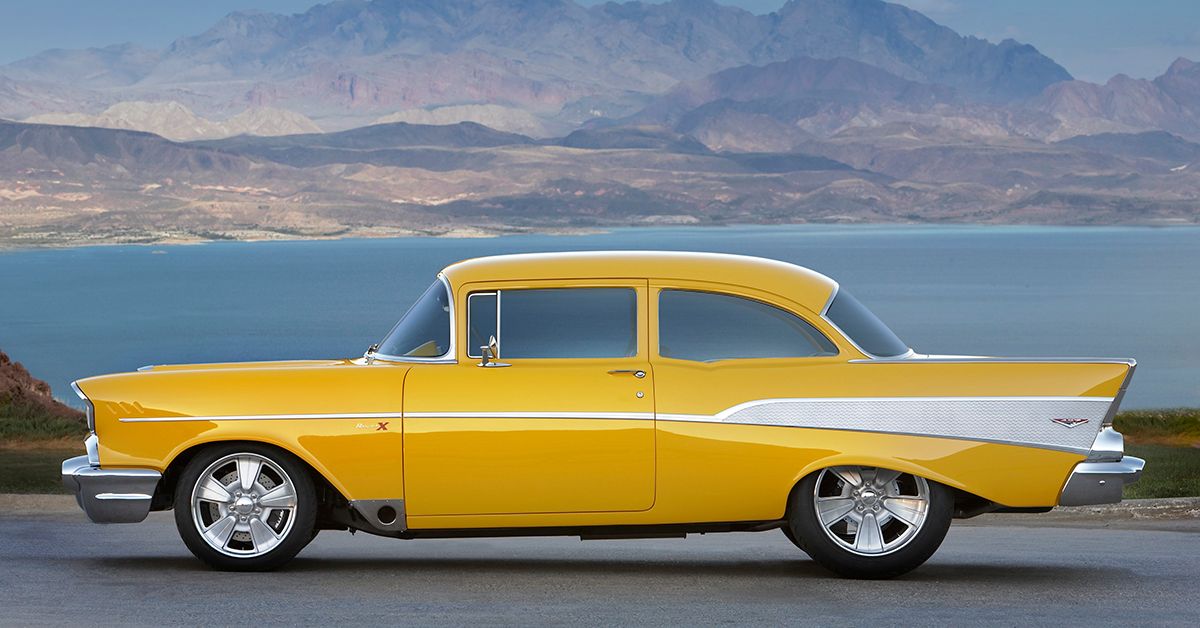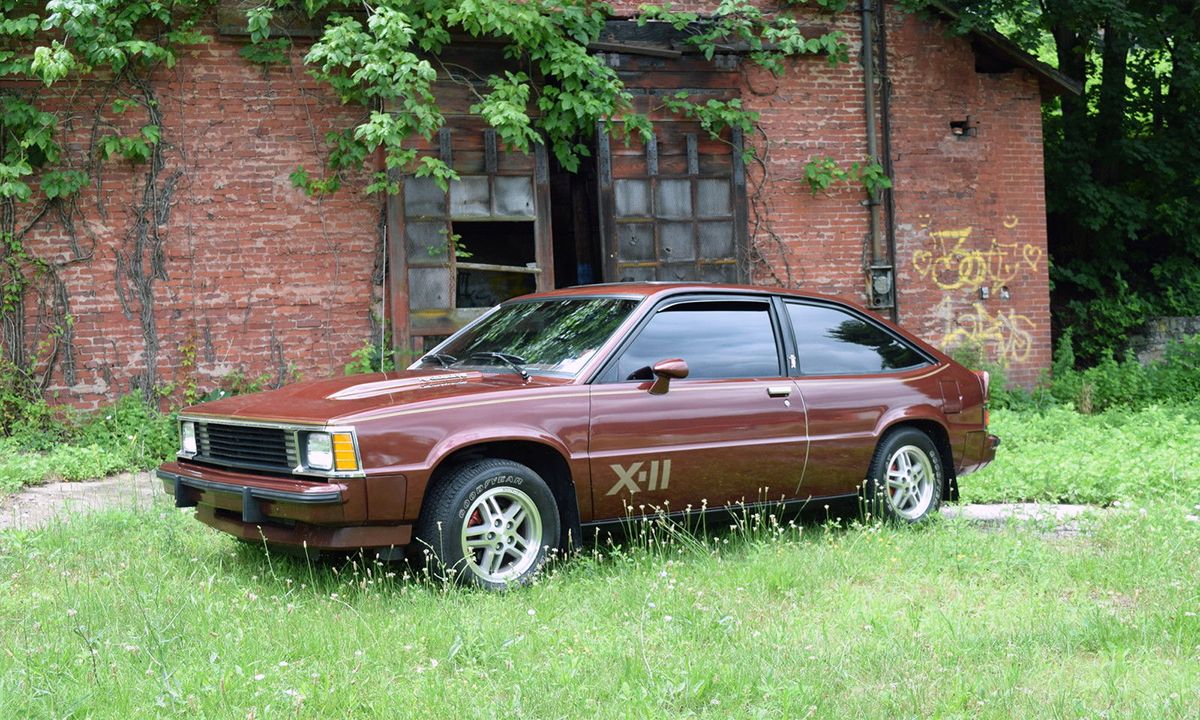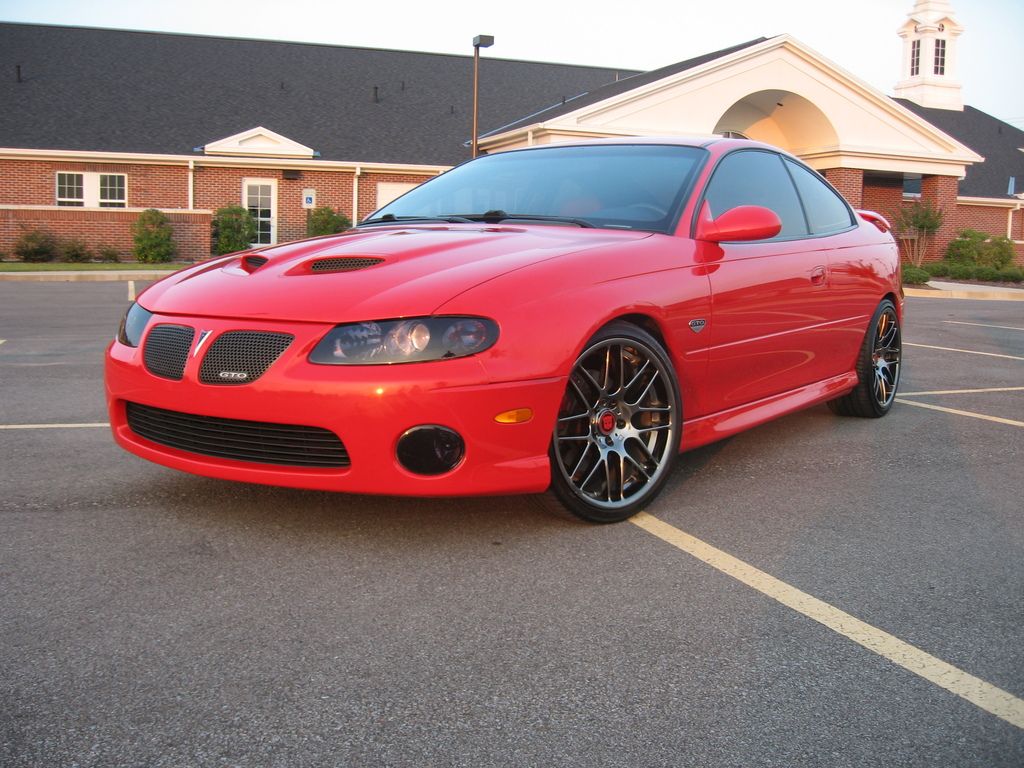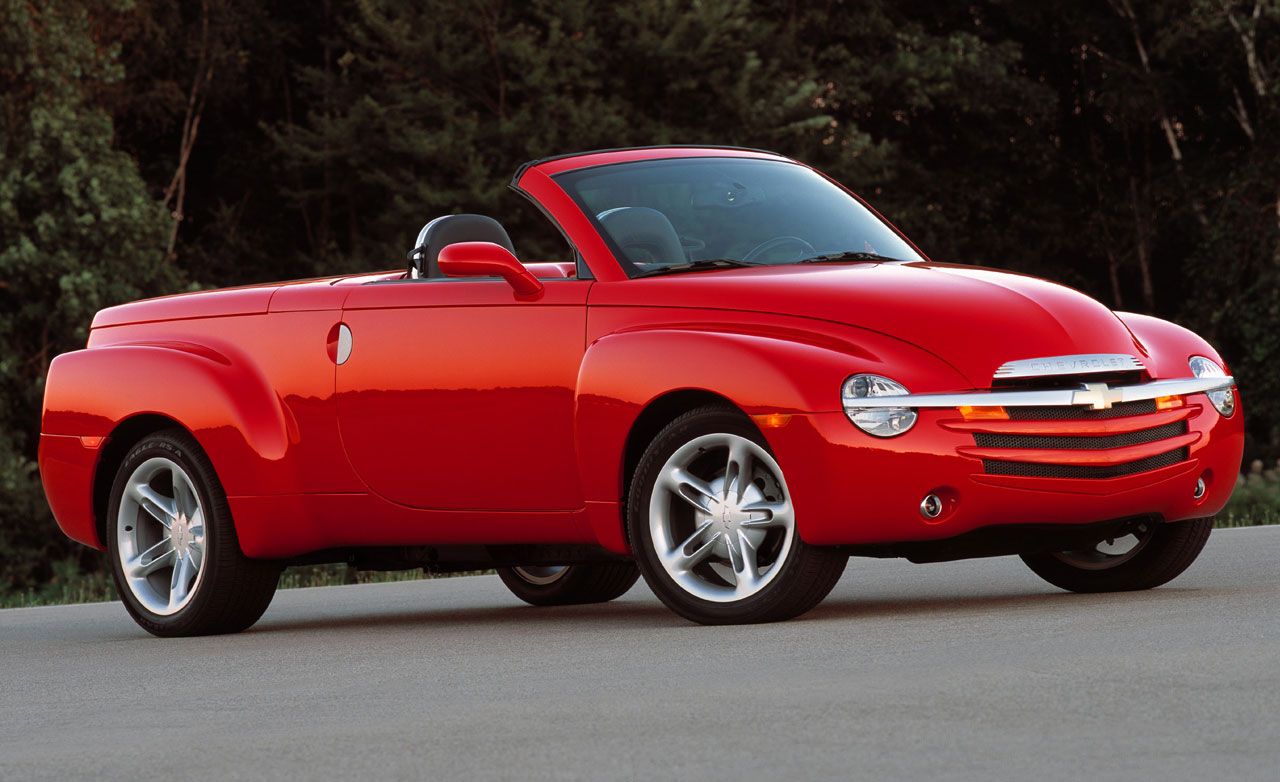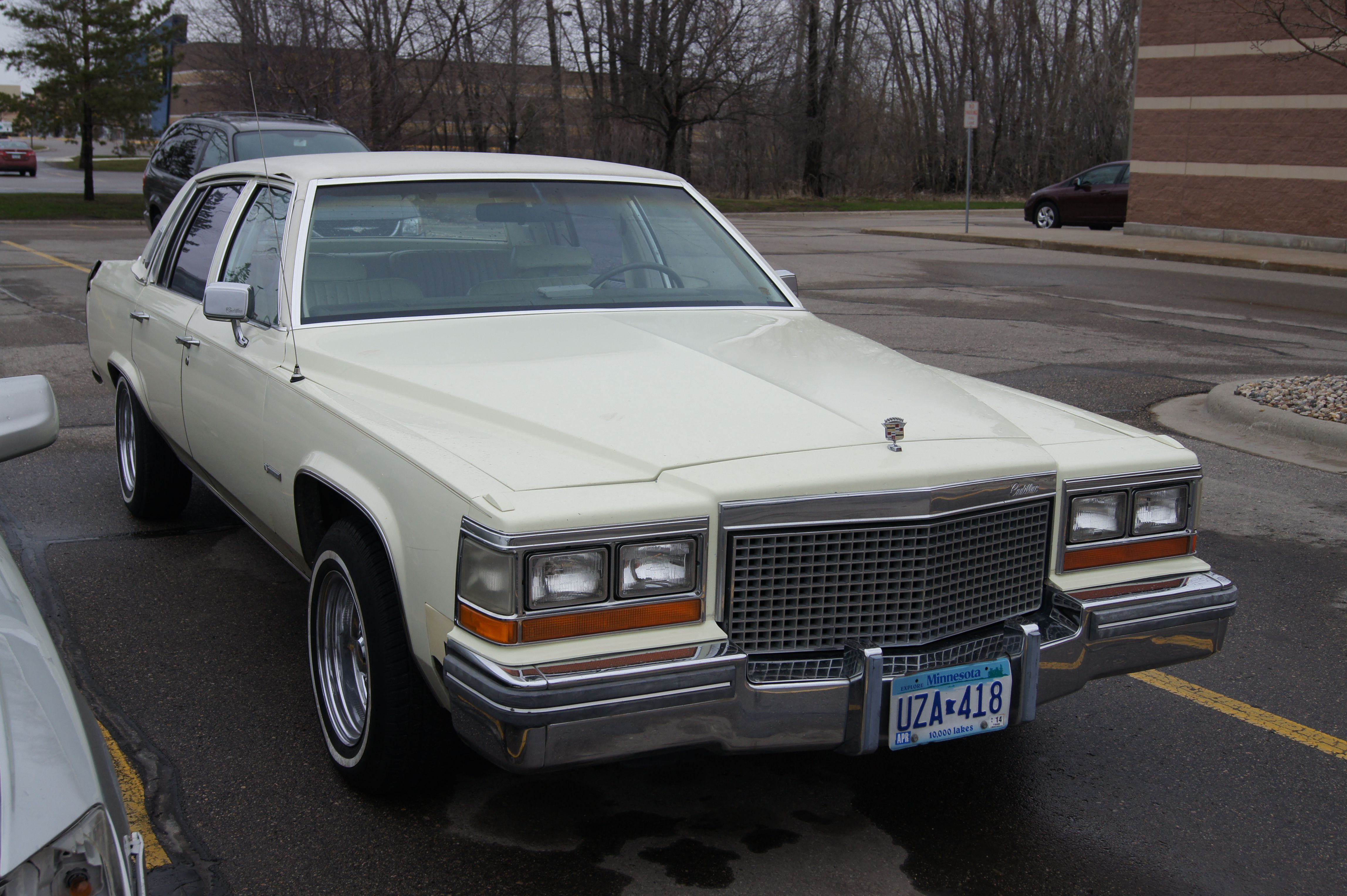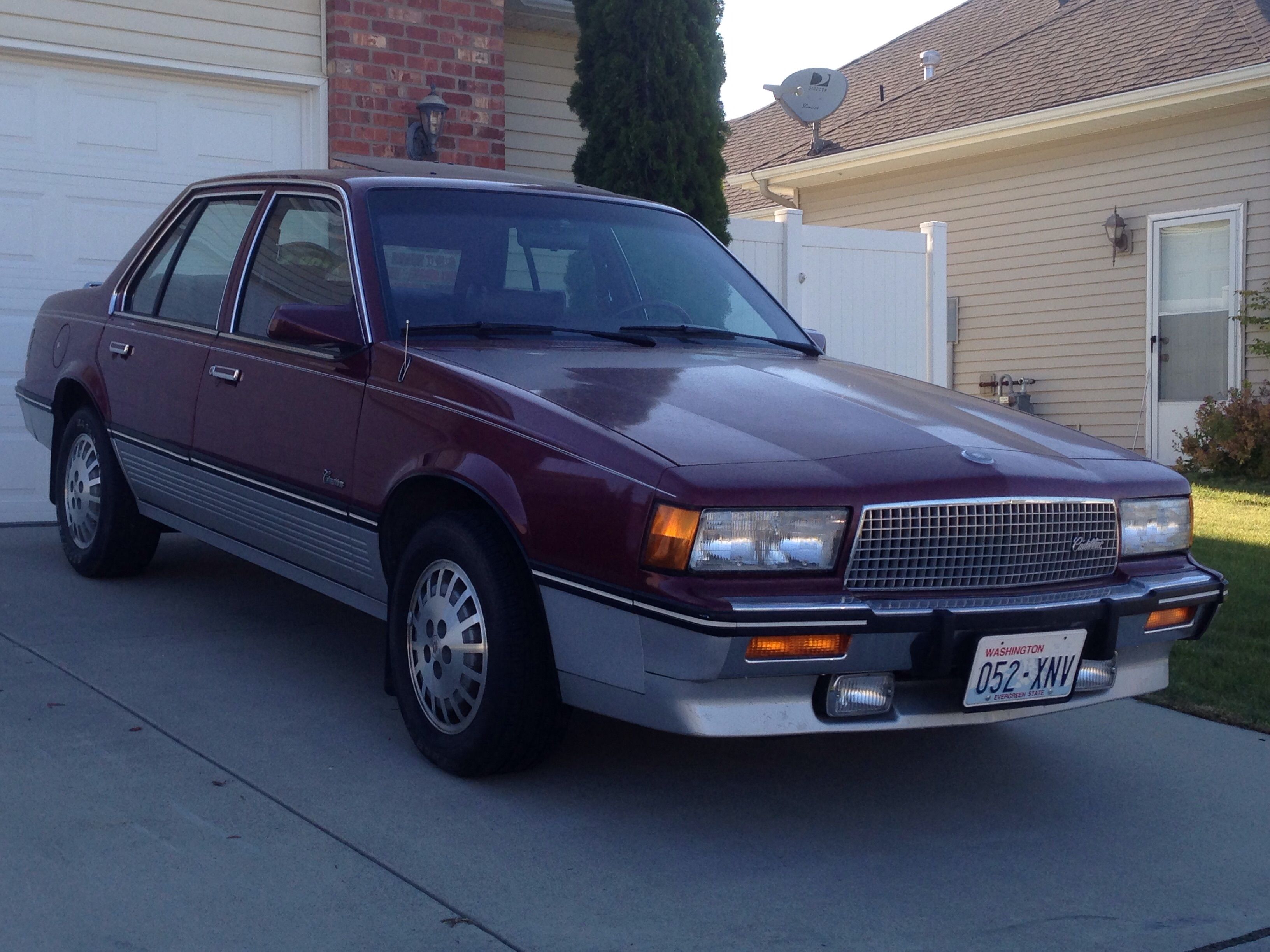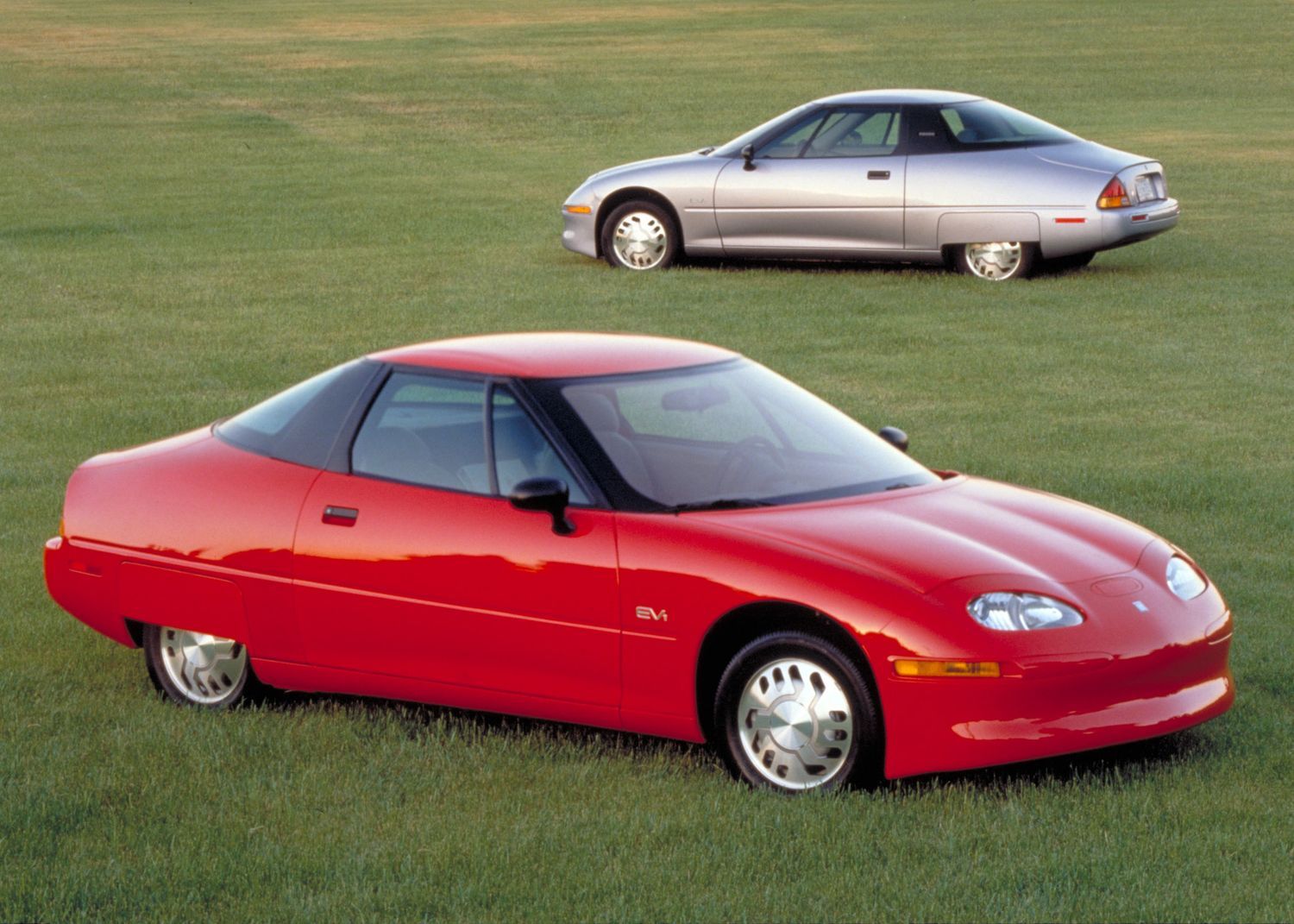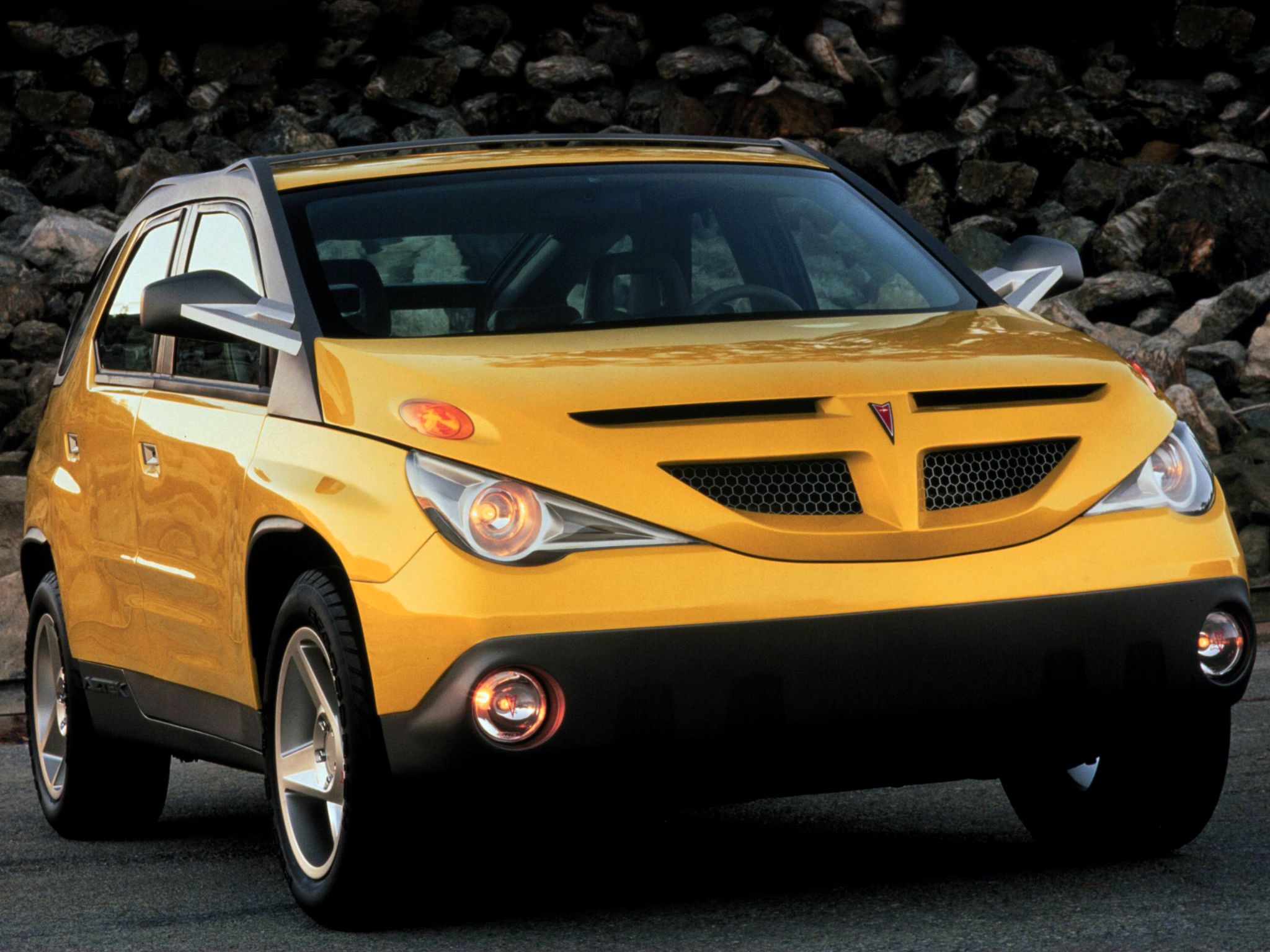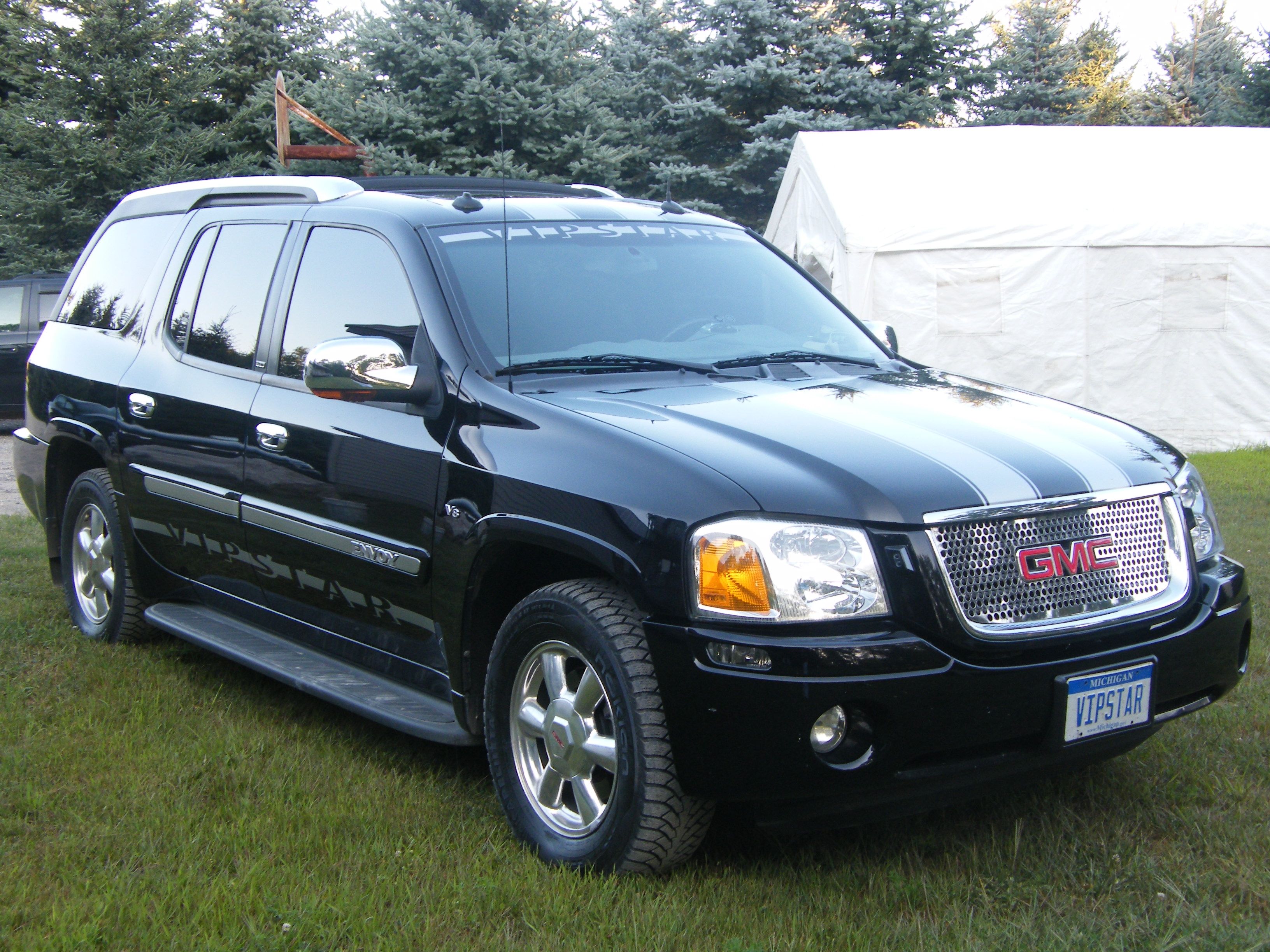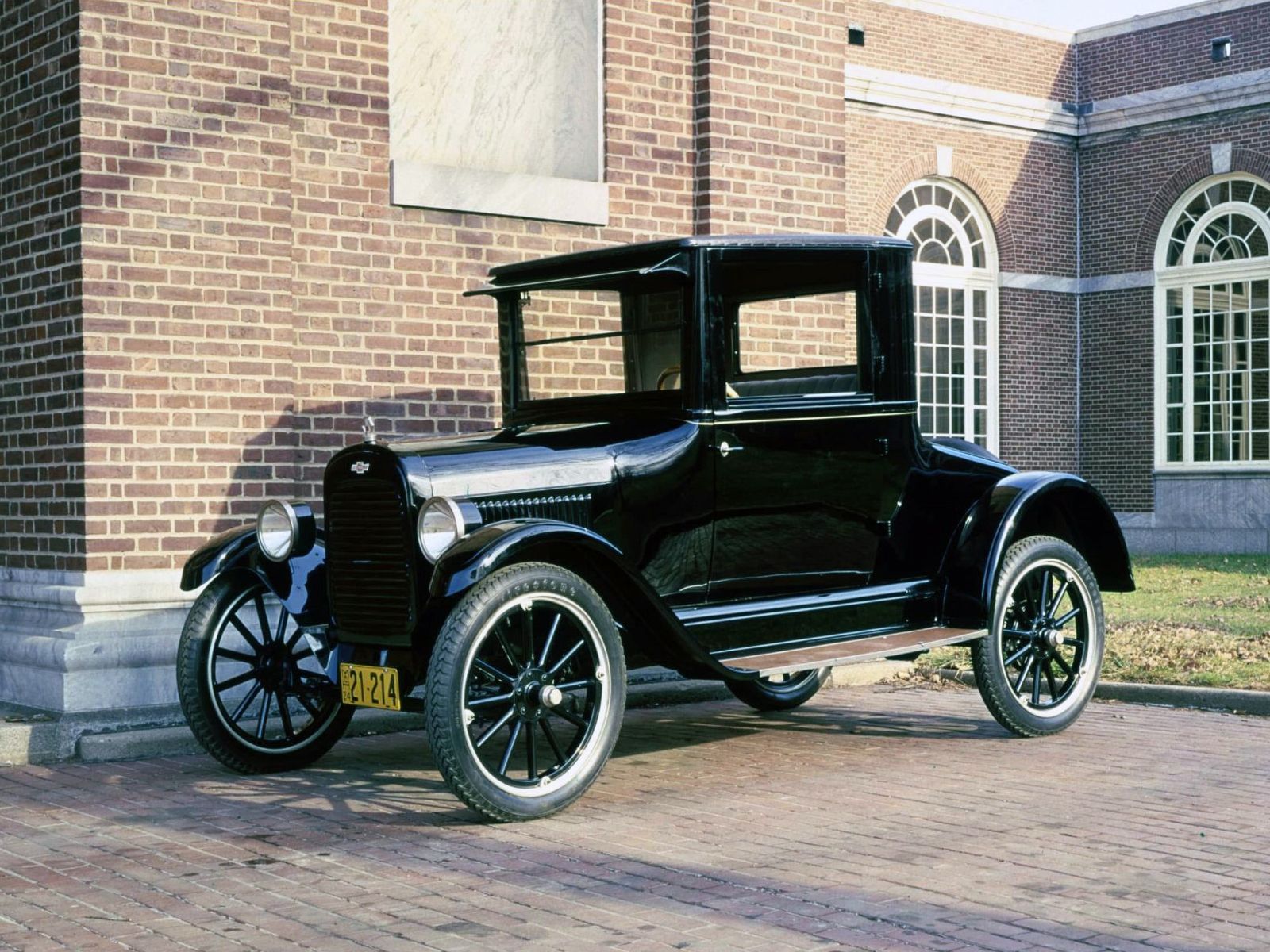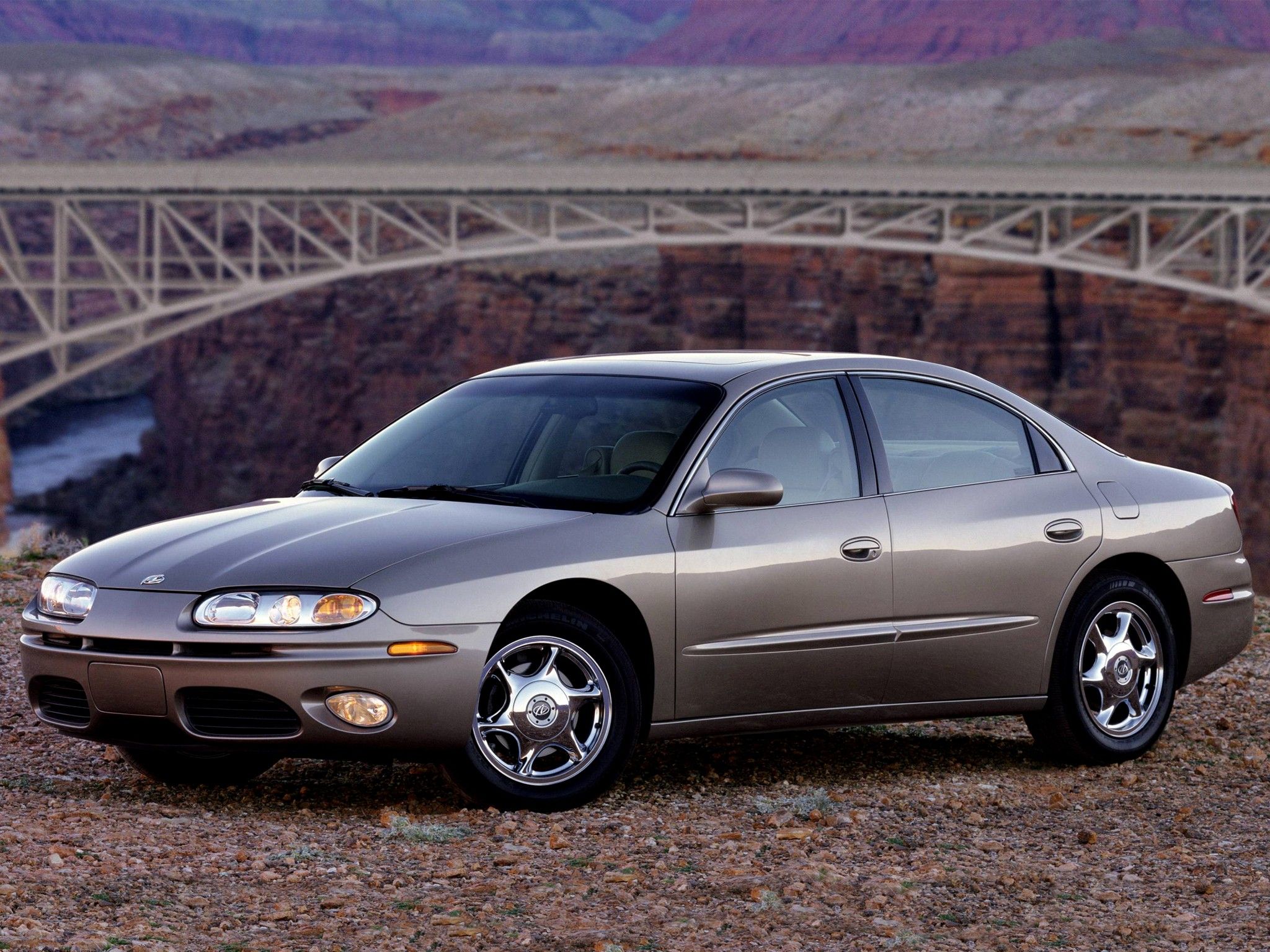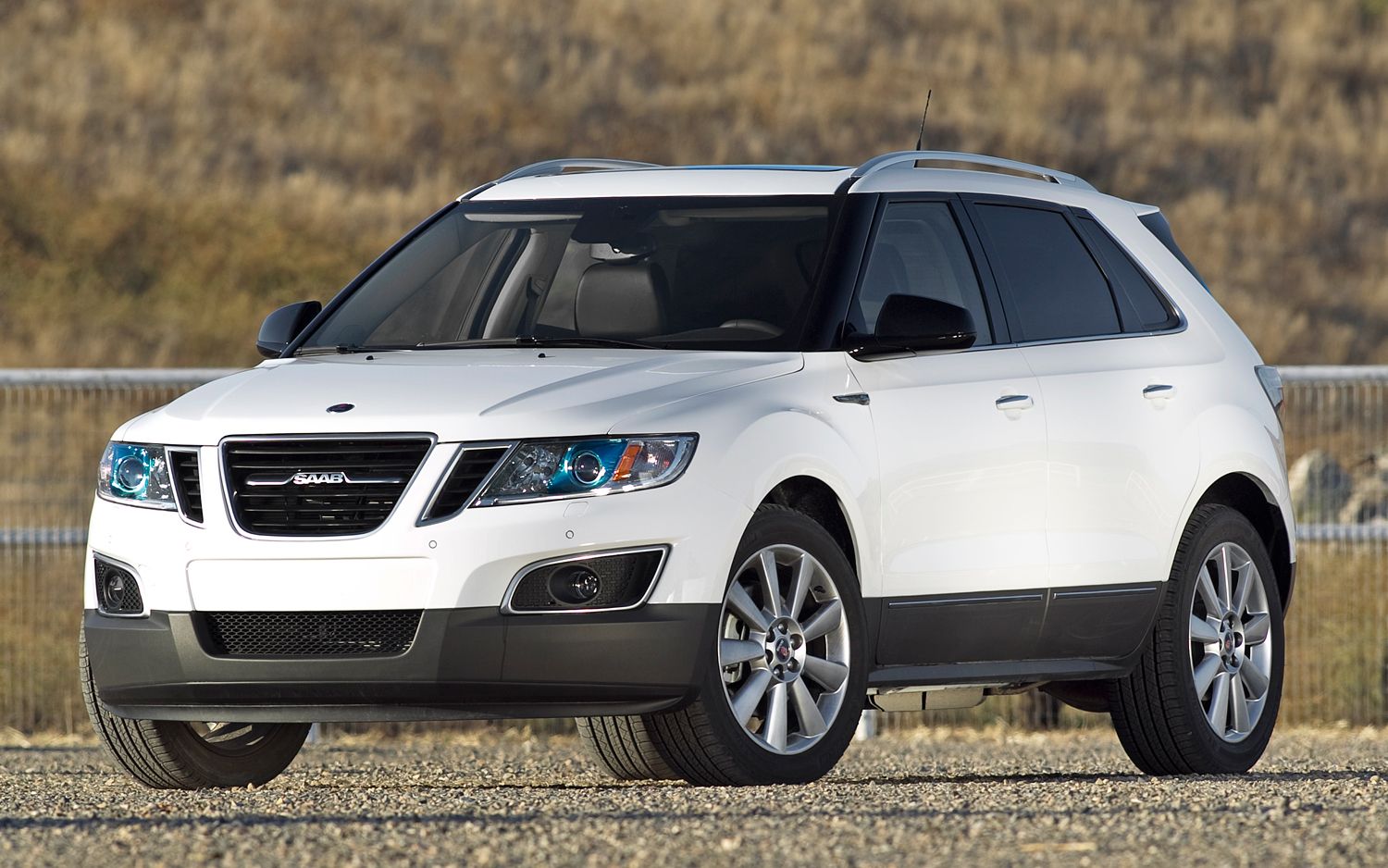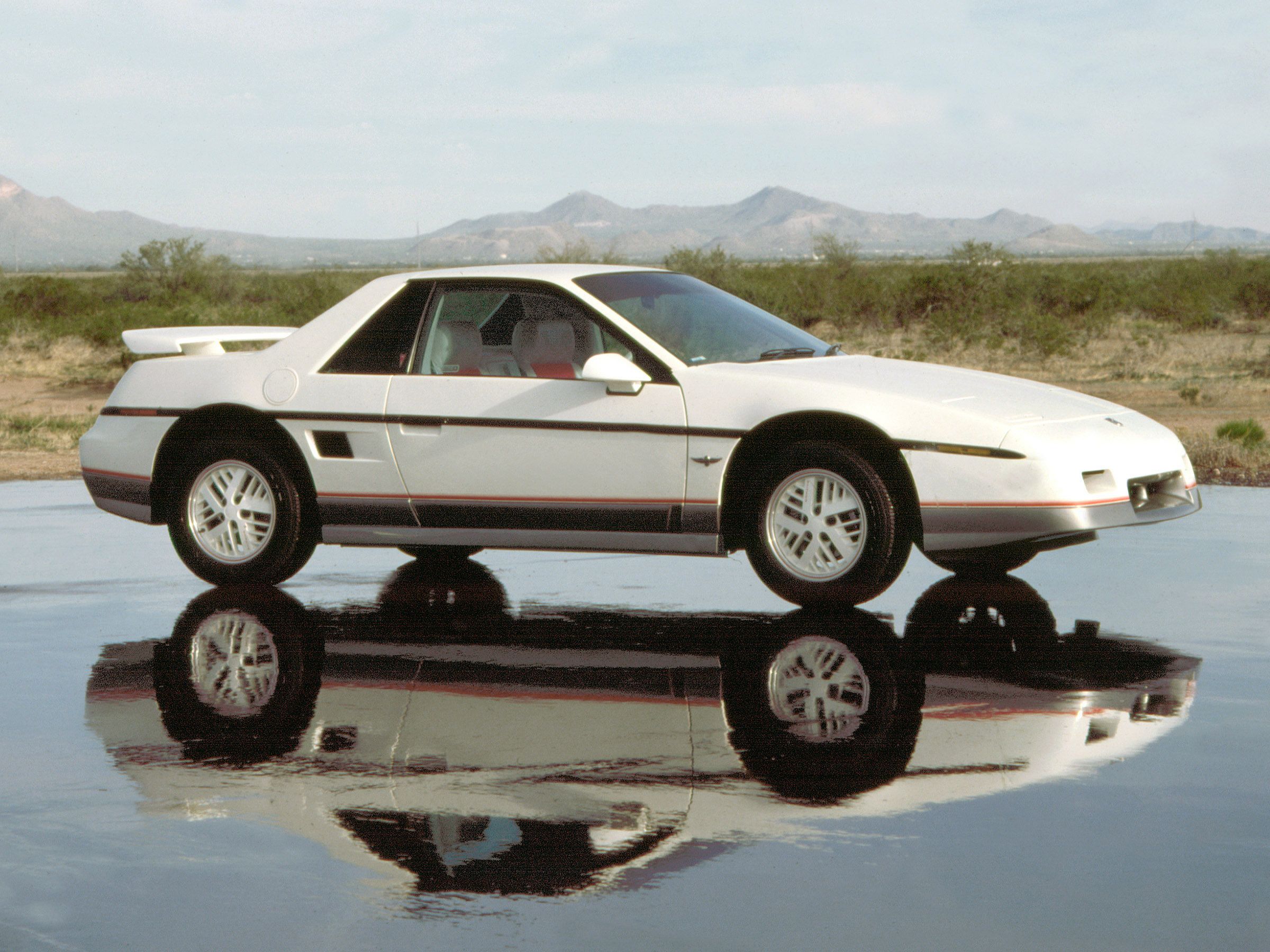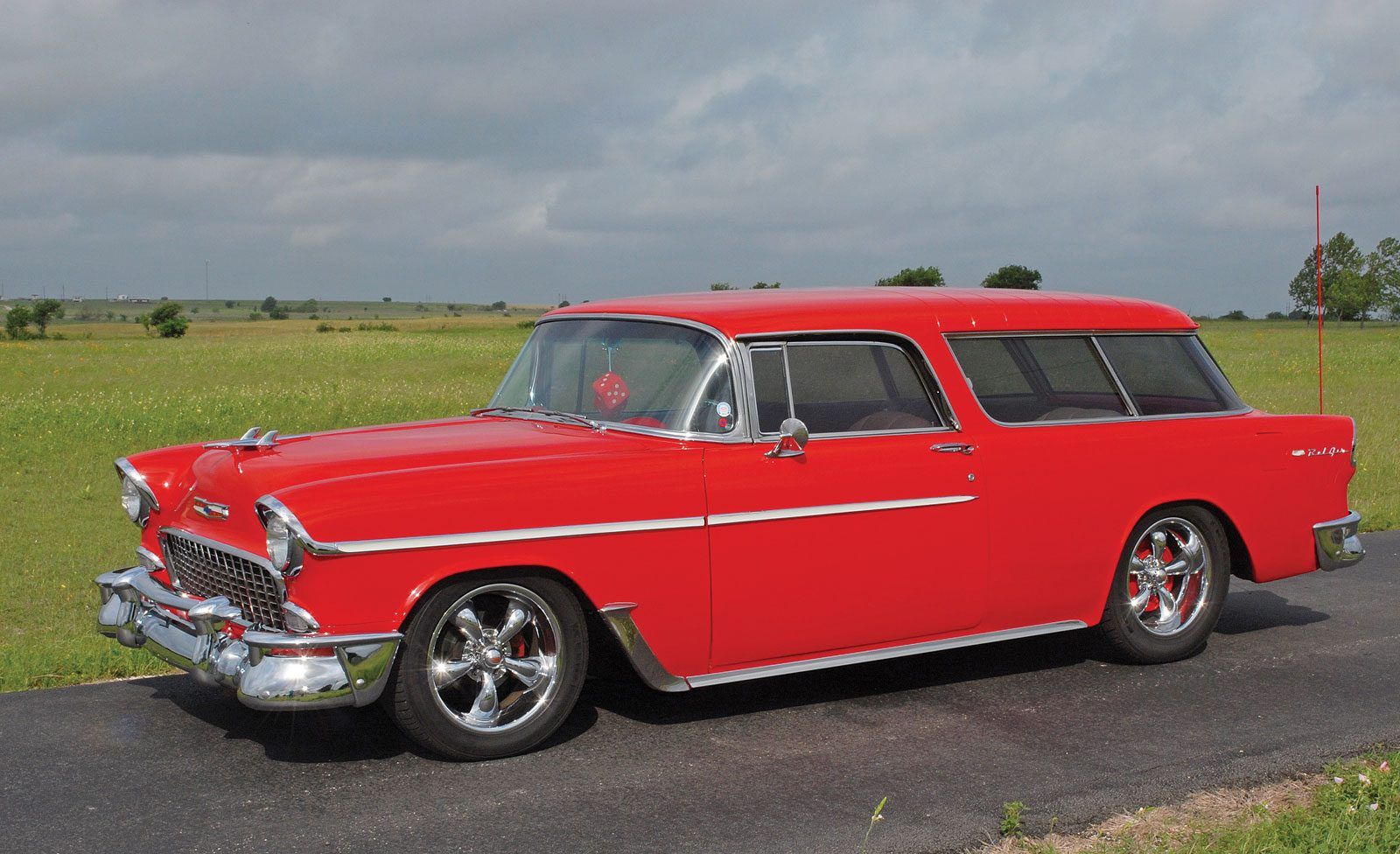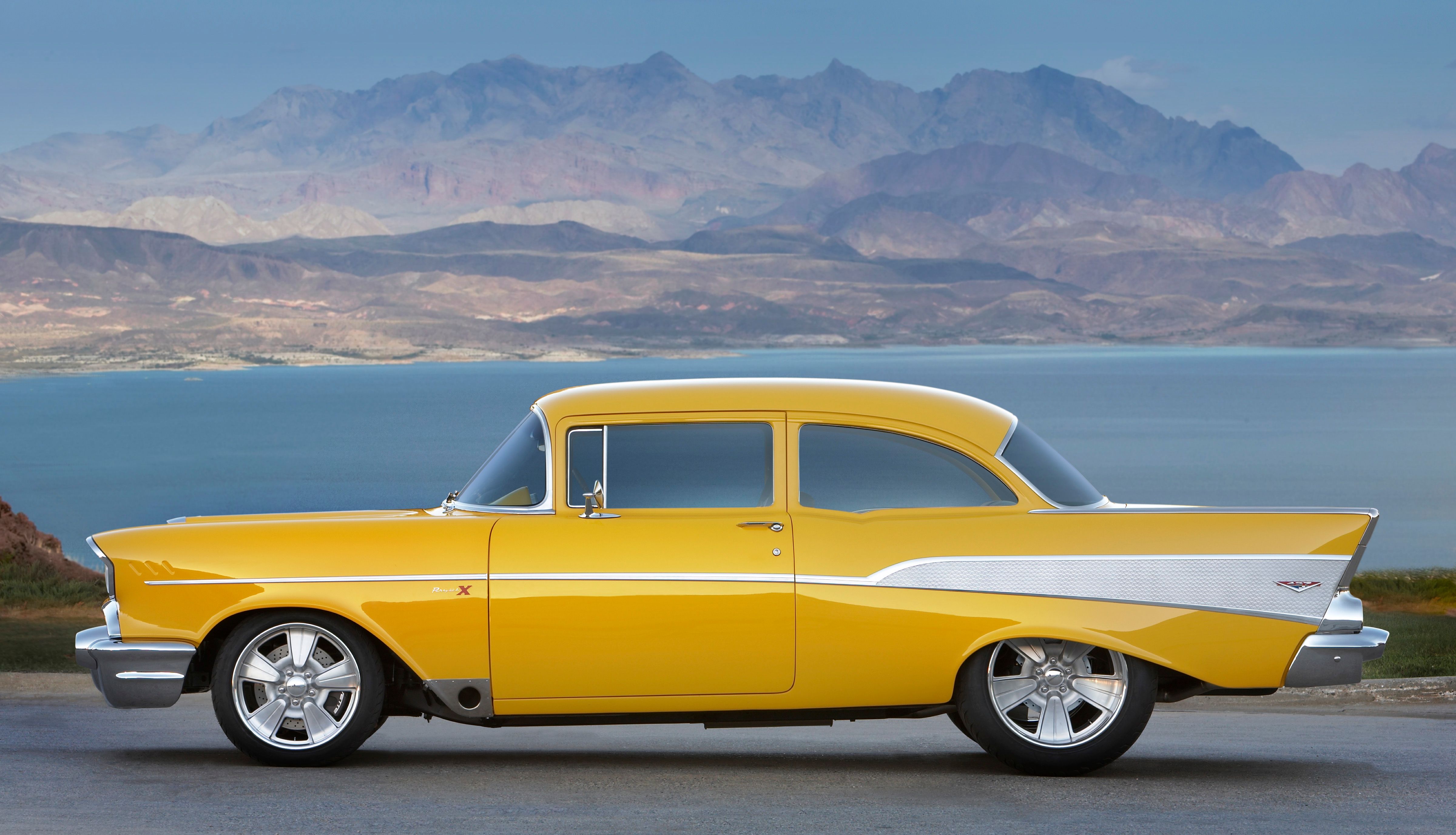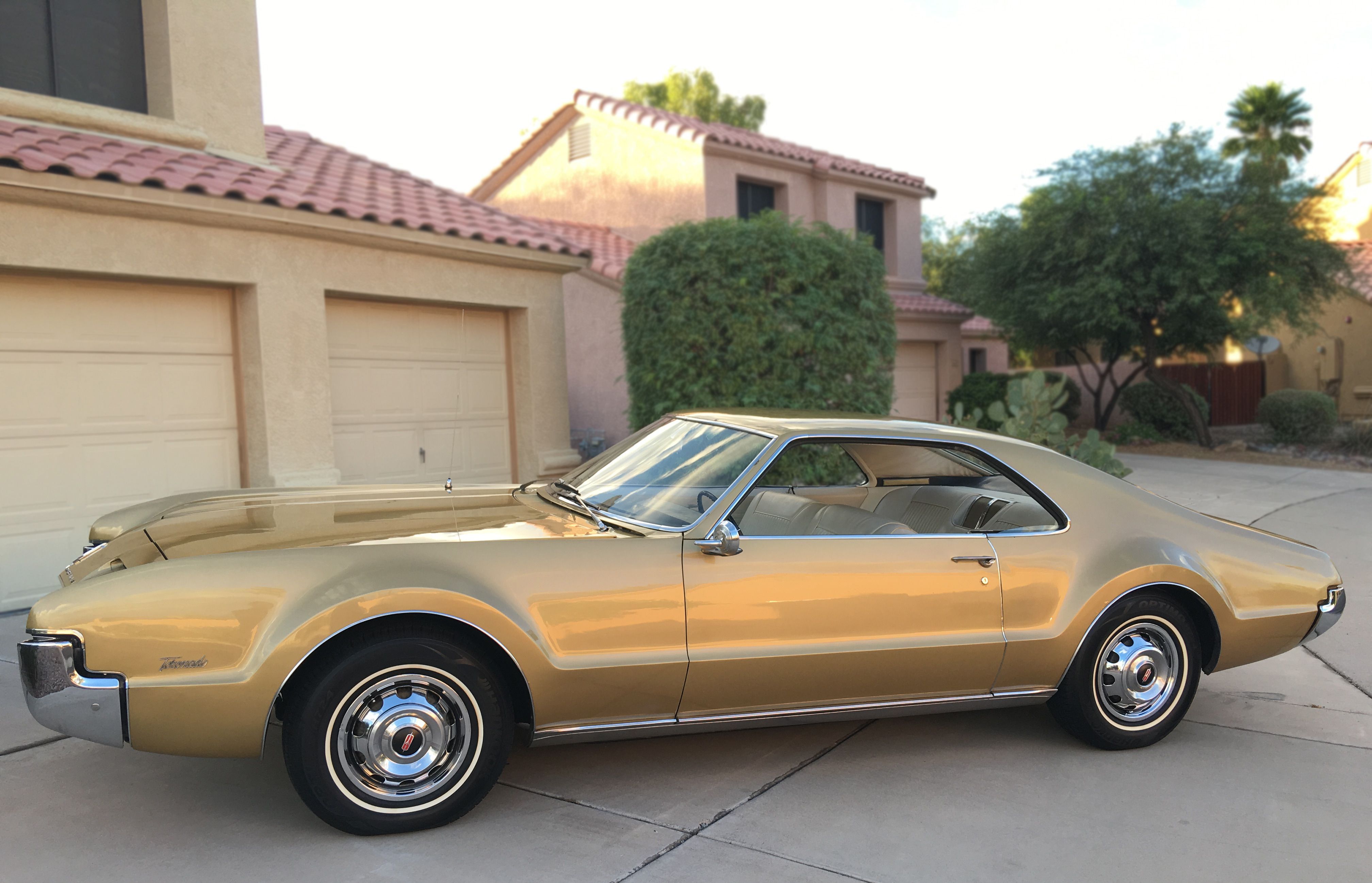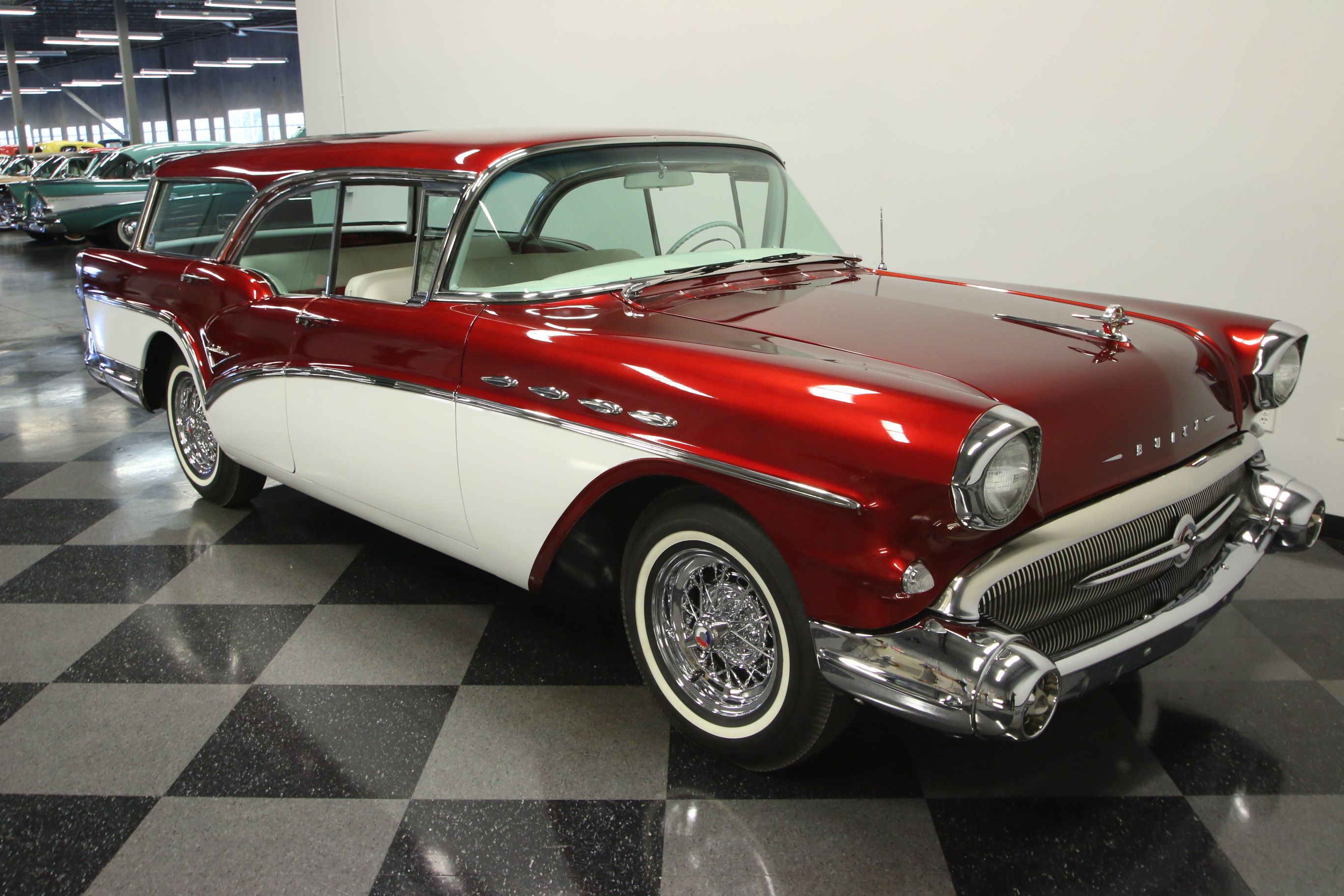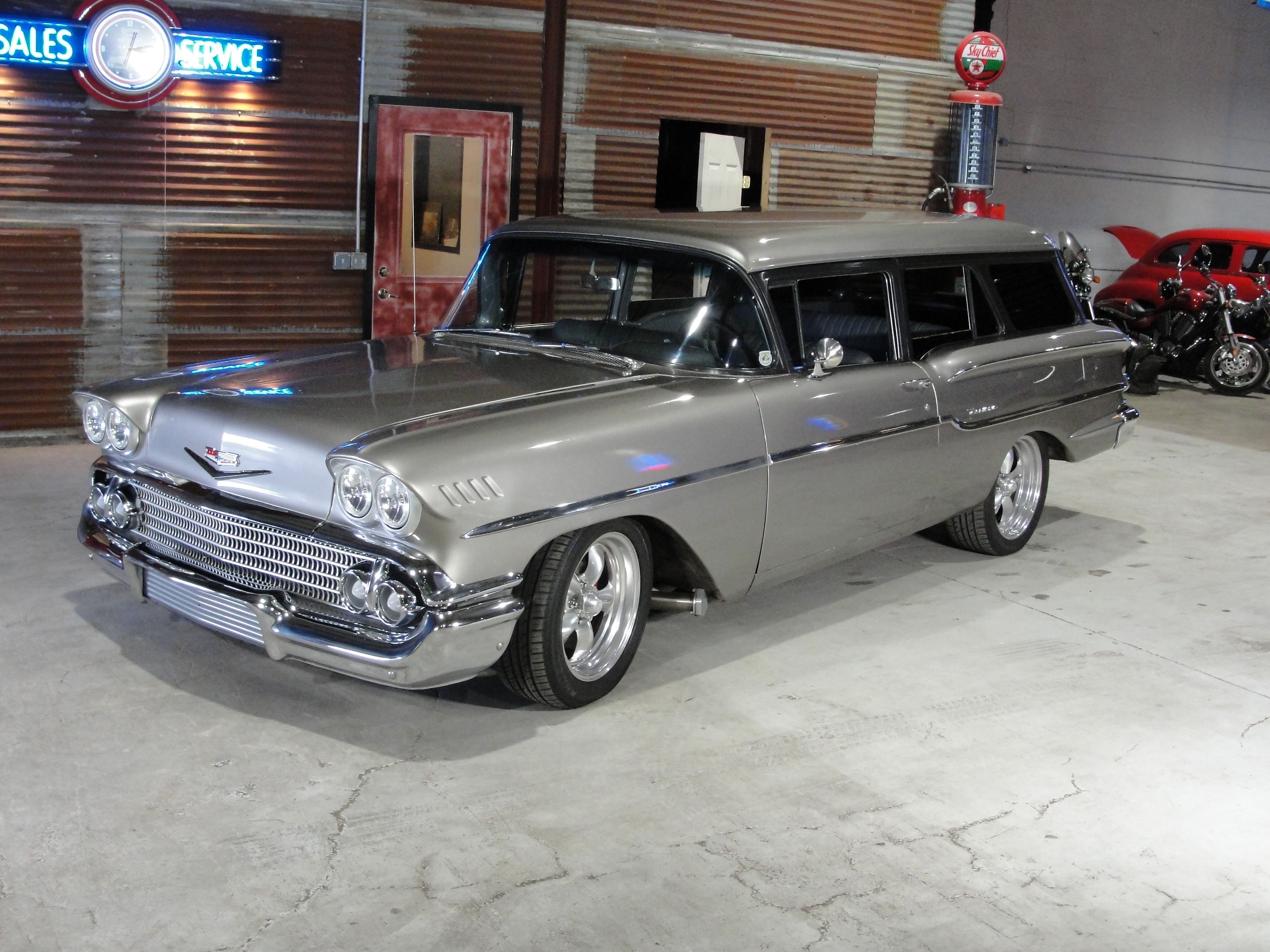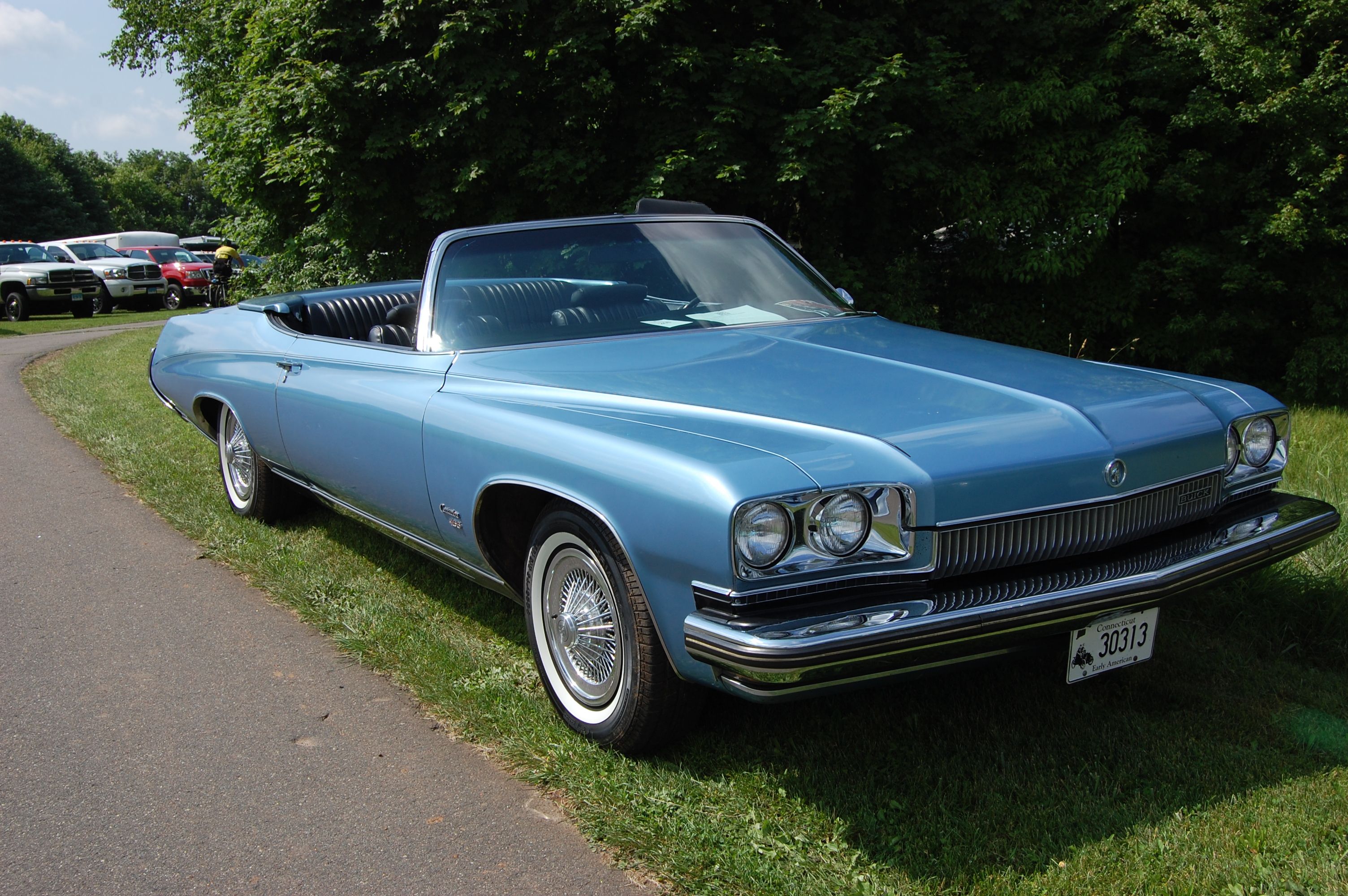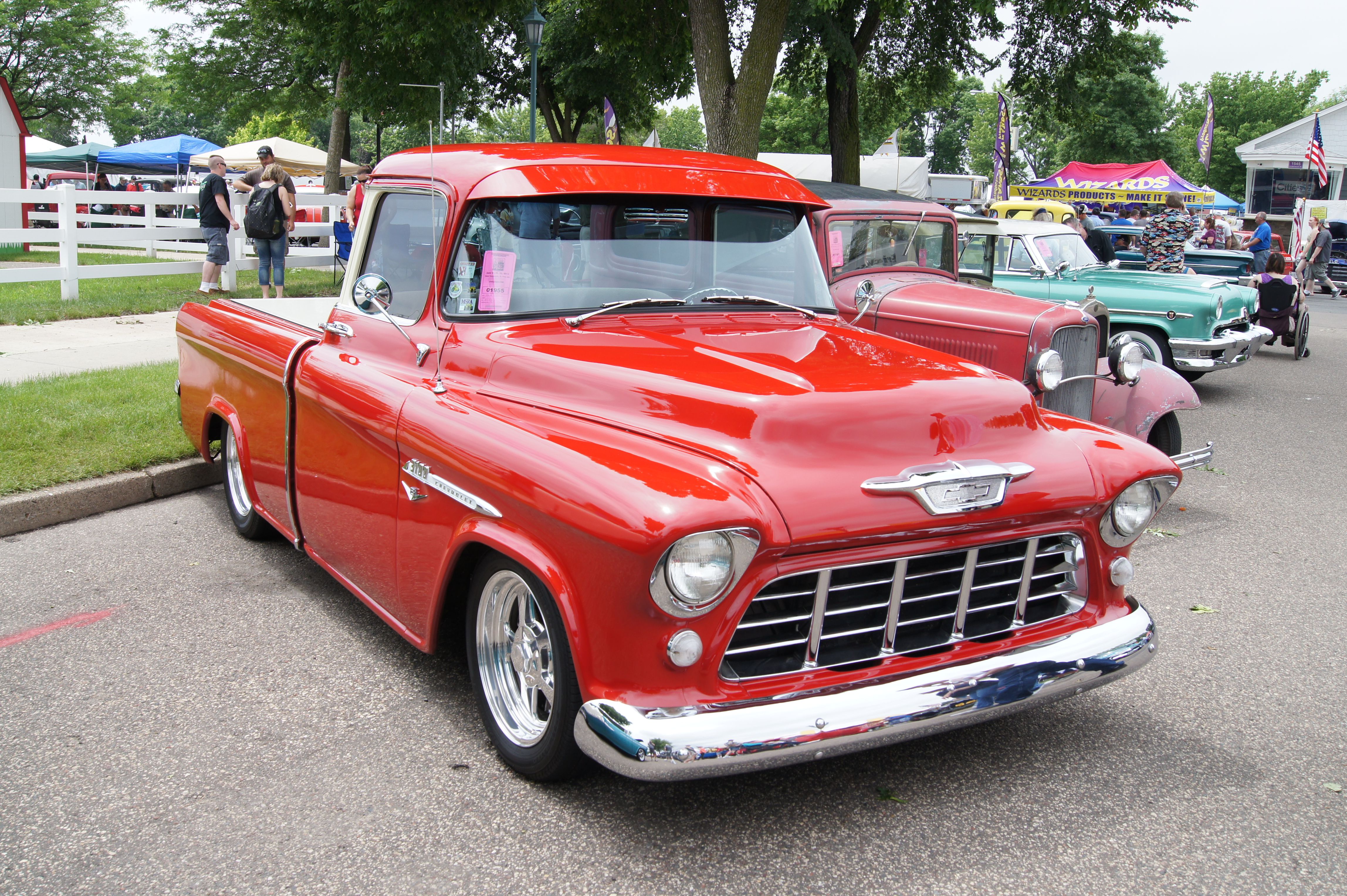There I was standing in the middle of a parking lot, staring down the hood of a 1957 Chevy Bel Air. Man; it had been a while since I had seen one of these beauties. Yet here’s this classic, gorgeous looking model sitting before me like it was the early 1960s and a drive-in was right around the corner. In the same parking lot sat a mid-2000s Pontiac GTO and on the opposite side of the lot was an Olds Aurora. The GTO actually looked pretty pristine for a model that’s often regarded as the queen of plastic and cheap trim – I was a little impressed. Time certainly could have been nicer to the Aurora, though.
Seeing these three cars in a parking lot really got me thinking. How many cars out there were launched as just another model to fill the gap but eventually became near-priceless classics? And, what about the cars that were born into this world with a true direction and purpose but failed miserably. That parking lot showed me the best of both worlds. The Bel Air, for example, was just another model that rolled with the times, while the mid-2000s GTO was supposed to represent old-school muscle and put Pontiac back on the map. Even the Aurora was billed with saving the Oldsmobile brand, and we all know how that went.
There are so many cars out there that have experienced the same fate, and some that became classics by complete accident. This is a story from both sides of the pond; a story of 12 cars from GM that failed to live up to the hype bestowed upon them and 13 others that quietly sneaked their way into classic stardom.
25 Flop: Chevy Citation
Never mind the appearance of the Citation. It may not have been the most attractive car, but that’s not why it’s on this list. It was supposed to be a massive milestone for GM and was even the first Chevy sold with front-wheel drive. It was billed with taking on models like the Honda Accord and Volkswagen Rabbit.
But, as How Stuff Works, points out, it was plagued with problems and, after just a couple of years on the market, sales fell through the floor.
It’s a black mark on GM’s record now and is regarded by most as a complete design failure, but really did come close to being a prized model for GM. At one point, it was the best-selling car in America. It’s a little hard to believe, but it’s true. In the end, though, it was replaced by Chevy Beretta and Corsica just five years after its introduction.
24 Flop: 2004 – 2006 Pontiac GTO
Muscle cars were making a big comeback in the mid-2000s, and GM just had to get into it with the Pontiac brand. It did so in all the wrong ways, though. While Dodge came up with new designs for the Charger and Challenger, and Ford had the newly-designed Mustang, GM decided to import the Holden Monaro from Austrailia with Pontiac and GTO badges on it. As Edmunds points out, it wasn’t received well here in the U.S. because it was too expensive and its looks were just way too subdued for what it was meant to be.
Most of the GTO DNA that was supposed to carry over from the original GTO line was lost in translation. This magnificent piece of badge engineering gone wrong was overshadowed by the competition from the start and only lasted a total of three years before being canned. It could have put Pontiac back on the Map, but GM didn’t want to spend the time or money.
23 Flop: Chevy SSR
Creating the Chevy SSR had to be one of GM’s biggest mistakes. It was an attempt to gain entry into the “hotrod” market, much like Chrysler tried to do with the Plymouth Prowler. Like the Prowler (and the GTO, for that matter,) the SSR was short-lived, only surviving from 2003 to 2006. As Edmunds points out, its basic concept was to offer the look of a customized 50s pickup while sporting the drivetrain of a sports car.
As with all GM products in the early 2000s, it had plenty of problems, including poor performance and poor build quality, among other things.
To make matters worse, it was heavy and carried a heavy price tag with it. In the end, GM learned that you can’t sell a corporate-built hotrod and it has stayed away from that niche ever since.
22 Flop: Cadillac Fleetwood V8-6-4
Technically, it isn’t the Fleetwood that was considered a letdown but any Cadillac from 1981, really. See, Cadillac decided to introduce the V-8-6-4 cylinder deactivation system to all Cadillac models with the throttle-body-injected, 6.0-liter, V-8 engine in 1981 as standard equipment. The system, which was also found in the 81 Fleetwood, was supposed to increase efficiency as much as 15 percent and save Cadillac from emissions and fuel woes.
According to Hemmings (and anyone who actually drove one), the system was complete crap, though. The computer couldn’t keep up with what the engine was doing. So, once two or even four cylinders were shut off, getting back to V-8 mode was followed with considerable hesitation – a real drivability issue when you’re trying to overtake another vehicle. Most people deactivated the system as soon as possible and, well let’s just say it didn’t do well in terms of saving fuel. This technology disappeared until sometime in the early 2000s.
21 Flop: Cadillac Cimarron
The Cimarron was supposed to be GM’s prized fighter against none other than the BMW 3 Series. Instead, GM slam dunked its way into its worst decade ever. As pointed out by Paul Niedermeyer over at TTAC, the “Cimarron by Cadillac” was seriously nothing more than a 1980 Cavalier with leather seats. Even the dash was the same, and the engine under the hood was untouched – even delivering the same 88 horsepower. At least the BMW 320i had 101 horsepower and a sporty look to go with it. So, GM’s chance to take on the Germans was placed into a badge-engineered disaster known as the Cimarron. Needless to say, this overpriced Cavalier didn’t last long. GM did eventually give it a digital instrument cluster and a larger V-6 engine toward the end of the 80s, but it was too little, too late. Will GM ever learn?
20 Flop: GM EV1
The EV1 hit the scene with some 70 miles of range and eventually saw a battery upgrade that gave it as high as 110 miles of range. It was supposed to be, or could have been, the car that started the EV revolution. Instead, GM only offered them on a sketchy lease program with no option to sell. Furthermore, the EV1 was only offered in limited quantities in very select areas (think California.) It was an awesome car and those who drove it absolutely loved it.
When GM issued the final recall before crushing them, owners reportedly got together and protested the EV1’s demise.
In the end, almost every EV1 car that was built met its maker. As EV1.org points out, GM apparently paid $600 to crush each one instead of selling them for $25,000 a piece. This flop wasn’t because of poor sales, either. People wanted the EV1. The blame falls on GM for poor execution and failing to tackle a wide-open market when it had the opportunity to.
19 Flop: Pontiac Aztek
What was supposed to be Pontiac’s (and GM’s) next big hit turned into GM’s version of the Edsel. You could say that GM had the right idea with joining the crossover market – the market is booming today – but this was one model that drifted just too far away from the concept.
According to Time, GM designers admitted that the design of the Aztec had been messed with, cost shaved, and compromised to the point that it was nothing like it was supposed to be. It was meant to fit into the lives of those with an active or extreme lifestyle, but GM was afraid to spend any money, and we got this instead. It was ugly, but there really was a decent crossover hidden under the metal – its just too bad nobody gave it a chance. The Aztek could have saved the Pontiac brand, but it was killed off in 2005, with Pontiac following just five years later.
18 Flop: GMC Envoy XUV
How cool would it be to have an SUV that could haul like a truck yet offer an enclosed cargo area when needed? Maybe you need an SUV on the weekend and a truck during the week. Well, GM promised to have you covered with the GMC Envoy XUV. It was, in fact, a good idea, but the execution was pitiful at best.
It was based on the extended-wheelbase Envoy, and despite the fact that it was supposed to offer pickup-like hauling ability, it really couldn’t carry that much more than a regular Envoy. Fail.
Car & Driver even points out that the interior was cheap with plastic everywhere, its fuel economy was downright horrid, and it was even more expensive. What’s the payoff? Well, you could haul a grandfather clock, so there’s that. In the end, it never performed well and ended up being just as obsolete as the TrailBlazer.
17 Flop: Chevy Series-C Copper Cooled
GM’s rocky history isn’t limited to the 1970s and beyond. No; its troubles run much deeper than that. Case in point: the 1923 Series-C Copper Cooled. The Series-C Copper Cooled was supposed to be Chevy’s cheap offering that could compete with the Ford Model T, but those copper fins on the engine weren’t good enough to keep the engine cool at low speeds. Chevy expected it to sell in high numbers – by high we mean 50,000 models per year – but, according to CheatSheet.com, the first five months led to just 759 examples being built.
Engine failures and fires became commonplace, and Chevy eventually recalled every single one as it abandoned the project altogether. GM knew it was a failure, and even destroyed the last 259 that we built before they could even leave the factory. Was it the fastest flop ever? Probably. A production run of only five months with less than 1,000 examples built before being written off has to be some kind of record.
16 Flop: Oldsmobile Aurora
The Oldsmobile Aurora was a breath of fresh air for a brand that had suffered from GM’s undying and insatiable urge to bootleg designs from one brand to another. That was, arguably, Oldsmobiles biggest downfall. Well, GM’s downfall, really, but we’ll leave that story for another time.
The point is that the Aurora was purpose-built to save Oldsmobile and even carried the last Oldsmobile-specific engine to ever be made – a 4.0-liter V-8.
It was thrown together like a five-year-old with legos though, so even though it tried to save the brand, it didn’t stand a chance. According to Patrick Bedard of Car & Driver, the Olds had these subtle little problems like malfunctioning temperature displays, for instance, while V-8 models suffered from outrageous torque steer. Some models had crazy interior rattles, and others had sticky steering. Even the body panels sat just a little off, almost like the cars were thrown together by people that didn’t care. Well, this was toward the end of Oldsmobile’s life, so maybe they didn’t. Either way, the car was supposed to be a lifesaver and ended up needing life support itself.
15 Flop: Saab 9-4x
When Saab was a division of GM, it was naturally subject to lots of badge engineering. That’s exactly what the Saab 9-4x was – a badge-engineered version of the Cadillac SRX. Its sole purpose in life was to bolster sales in Saab’s biggest market, the United States. Of course, it didn’t work out that way, and it was killed off rather quickly as Saab was sold off to Spyker and eventually found face down in a pile of bankruptcy paperwork (funny how Saab went bankrupt right after GM offloaded it on Spyker, huh?)
In the end, it wasn’t necessarily a bad vehicle outside of the subdued interior but, as Car & Driver points out, it had stiff competition from Audi, Infiniti, Lexus, Mercedes, and BMW. With such a heavy chassis, a built-in-Mexico sticker, and subpar fuel economy, the 9-4x didn’t have a chance to save Saab and flopped belly up right along with it.
14 Flop: Pontiac Fiero
For once we get to talk about a car the GM really tried with – the Pontiac Fiero. It wasn’t some badge-engineered disaster or a car that was poorly built, but it became known as unreliable early in its life and was more than expensive to maintain. As Motor1 points out, it was often considered under-engineered and even overly complex in some areas.
The engine itself was a mistake GM probably regrets to this day as it was initially equipped with an old and under-powered Iron Duke instead of the high-revving 1.8-liter it deserved.
It was heavy and slow (11.3 seconds to hit 60 mph slow,) and for some reason, a good handful of them (135 reported to the NHTSA) actually experienced engine fires. As a mid-engined sports car, the Fiero had a lot of potential, and GM could have held up with the big boys with the right engine and right design. It was pretty successful sales-wise, but it never held up to its true mission of putting GM into the sports car niche as a true competitor.
13 Flop: Chevy Nomad
The Chevy Nomad started life as what was, essentially, a conceptual version of a Corvette Wagon – an old-school shooting brake, if you will. By the time the concept made it to production, however, it was based on the Bel-Air and is now one of the most famous wagons ever built. According to Hagerty, the Nomad “really did transform Chevrolet in 1955.” It had the clean styling yet had enough flourish to keep things interesting for the 50s. With a V-8 under the hood, it was quick and capable of hauling just about anything you could fit in it.
Nobody thought a wagon would ever become a true classic, but this car is the definition. All-original examples can be found with price tags ranging from $75,000 to well six-figure territory. Those that aren’t all-original have been associated with customization in a classic-friendly way, of course.
12 Classic: Chevy Bel Air
The Chevy Bel Air was introduced with the job of working against the grain. Models with similar characteristics had come and gone, leaving no real mark in history. But, the Bel Air came at a time when Chevy was at its most luxurious, and after just a few years, it became one of Chevy’s lead models – a trend that would continue for more than 20 years!
According to HHClassic.com, the first-gen model alone was available as a two-door coupe, hardtop coupe, convertible, four-door sedan, and four-door station wagon.
Now, you can find the Bel Air, in various body styles, hanging out at any classic car show. They come out in droves for Chevy car shows too. What started out as just another model has become one of the most well-known and well-desired classics today.
11 Classic: Pontiac GTO
GM probably didn’t think that the GTO name, starting out like as nothing more than an option package on the Pontiac Tempest, would become such a classic. It didn’t become its own model until 1966, but it’s still considered to be the car that ignited the muscle car wars of the 60s and early 70s.
The craziest part is that, according to Janjedlicka.com, the GTO almost never existed because GM didn’t want to distance itself from its older, more conservative customers. Talk about almost making a bad decision, right? In the end, the GTO is a surefire classic with original examples being highly sought out. These classics now typically range in price from $75,000 to more than $100,000 depending on how original they are.
10 Classic: Oldsmobile Tornado
The Oldsmobile Tornado was the first front-wheel-drive vehicle to grace U.S. roads since 1937 when Cord went belly up. It was way out of its place in terms of style, but that driveline was, quite literally, one of a kind at the time. Under the hood sat a V-8 that was good for 385 horsepower and 475 pound-feet of torque. The engine was even mounted longitudinally – much like the engine in a rear-wheel-drive vehicle – with a funky mounting position for the transmission. It basically sat backward, and a chain was used to transmit power from the engine to the transmission.
With this kind of weird driveline (and no more power sliding around corners in an Olds,) it’s surprising the Tornado saved its own place in history but this thing is a true classic now, and it was certainly never expected. It was even named Motortrend’s car of the year in 1966 – how crazy is that?
9 Classic: Buick Caballero
This is one funky-looking wagon, isn’t it? As a pillarless model, it had a lot working against it, including poor sales – the main reason why it was only produced for about a year. But, that didn’t stop it from becoming a classic. With 300 horsepower under the hood, this hard-top wagon was actually pretty quick for what it was, and it was outlandishly spacious inside. The most common problem was air leaks when the window was up, but that was common with all pillarless designs back in the late 50s. According to How Stuff Works, just over 10,000 were built in that short timeframe and back in 2007 one actually sold at auction for nearly six figures. Not bad for a car that became one of the most obscure classics out there, huh?
8 Classic: Chevy Yeoman
Yeah, we really decided to go with two wagons back to back, but how couldn’t we when the thought of the Buick Caballero reminded us of the 1958 Yeoman – a one-hit wonder of a vehicle that was offered with just two options: two-door or four-door. That’s it.
In fact, as an entry-level model, it even featured a vinyl interior, rubber floor mats, and a linoleum-covered cargo area. According to Autowise.com, you could literally wash out the interior with a wet sponge. Ah, the easy days.
The Yeoman isn’t classic in a way that brings in big bucks, but it is great for resto-modding and typically goes for, in well-preserved condition, about the cost of a brand new Mercedes C-Class Sedan on today’s market. With a $40,000 price this far down the road, it’s not doing too bad.
7 Classic: Buick Centurion
The Buick Centurion was a replacement for the Buick Wildcat, and it had big shoes to fill. It was a full-sized sports car with sleek looks. The problem was that it wasn’t exactly marketed as the sporty car it was, instead of being offered by GM as a luxury-mobile.
It also fell victim to the fuel economy and emissions regulations, so by its third year on the market, the standard engine offered just 175 horsepower.
According to Autowise.com, it even beat out the Wildcat as far as sales, yet it was still killed off after a couple of years. It may have shined briefly and brightly, but it’s a downright classic that’s easily overlooked and often forgotten.
6 Classic: Chevy Cameo Carrier
The Cameo Carrier is regarded as the truck that revolutionized and changed pickup design forever. According to Autowise.com, there were more than 10,000 examples built during its four-year production run, and its sole purpose was to fill the hole that separated traditional trucks and everyday passenger cars.
The good news is that this legendary truck has never been forgotten – it’s a true classic through and through. It just didn’t make all tons of noise on its way to becoming a classic. It was the first model to feature the fleetside bed, however, and it was one of the first to feature an optional radio and power steering – things usually not found in trucks at the time.

